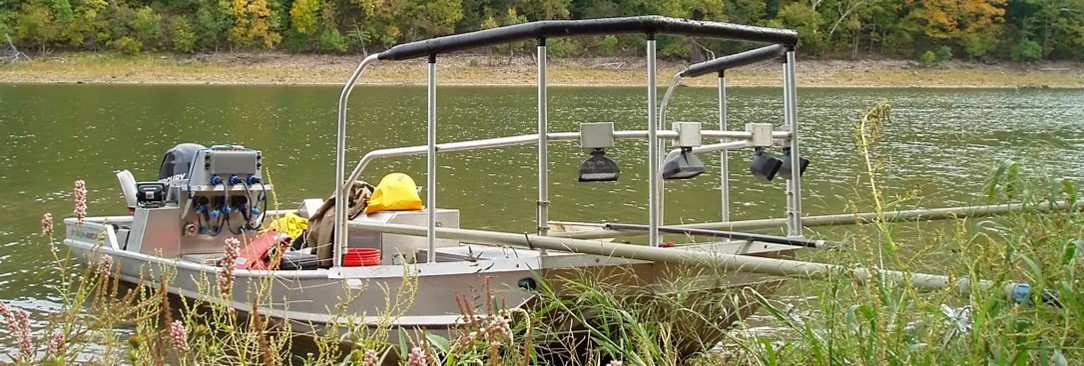The role of tributaries on ecosystem recovery of the Missouri River

Objectives
-
1) Determine the distribution and movement of the fishes of the lower Osage River that can be used in future comparisons in the face of projected altered hydrology and habitat from climate change.
2) Determine how the fish assemblage differs seasonally from the mouth of the Missouri River to upstream of the largest native mussel bed and above Lock and Dam #1.
3) Identify seasonal movement and distribution of mainstem Missouri River fishes (e.g., pallid sturgeon, lake sturgeon, blue sucker, and freshwater drum) in the Osage River.
4) Determine the contribution of large river fish larvae from the Osage River to the Missouri River.
Overview
Tributaries provide important habitat for spawning, rearing, feeding and refuge of big river fishes but river alteration may affect how fish use these systems. This study investigates seasonal patterns of fish abundance, species richness, and big river fish presence in two tributaries of the Missouri River in Missouri. The Osage River is altered by a hydroelectric dam and engineering structures while the Gasconade River is free-flowing for 482 river kilometers (rkm), resulting in different discharges and water temperatures. Sampling with boat electrofishing, benthic trawls, and seines in the lower 30 rkm of the Osage River and the lower 19 rkm of the Gasconade River from June 2012 to June 2013 resulted in the capture 84 species, 77% were found in both rivers. Four species of conservation concern, the Alabama shad (Alosa alabama), highfin carpsucker (Carpiodes velifer), crystal darter (Ammocrypta asprella) and lake sturgeon (Acipenser fulvescens) were captured in the Gasconade River but not the Osage River. Twenty-one big river species comprised 3% of the total fish caught. As large-scale ecosystem restoration continues in the Missouri River basin, understanding the role of tributaries by big river fishes will contribute to the planning of future restoration efforts.